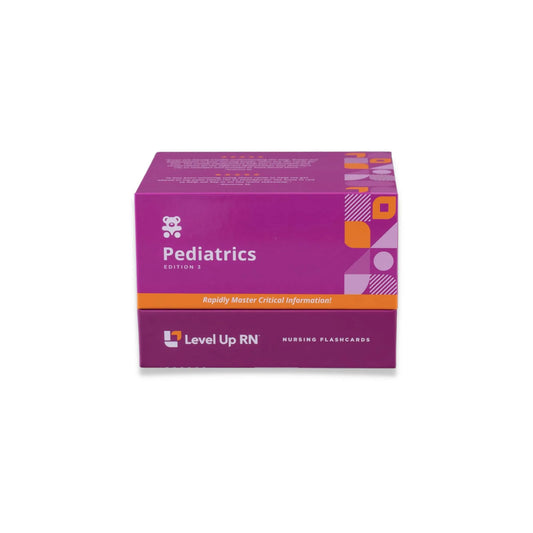Hi, I'm Cathy with Level Up RN. In this video, I will be discussing Hirschsprung disease. And at the end of the video, I'm going to give you guys a little quiz to test your knowledge of some of the key points I'll be covering, so definitely stay tuned for that. And if you have our Level Up RN Pediatric Nursing Flashcards, go ahead and pull out your flashcard on Hirschsprung disease so you can follow along with me. And pay close attention to the bold red text on the back of the card because those are the things that you are likely to get tested on in nursing school.
Hirschsprung disease is a birth defect characterized by missing ganglion cells in segments of the colon. So ganglion cells are nerve cells that promote peristalsis. So without these cells, we have decreased bowel motility, which can lead to severe constipation and a bowel obstruction. Signs and symptoms of Hirschsprung disease include failure to pass meconium in the first 48 hours of life, as well as abdominal distention, constipation, ribbon-like stool, vomiting that contains bile, a palpable fecal mass, as well as failure to thrive.
In terms of diagnosis of this disorder, imaging may be used, such as a contrast enema. In addition, anorectal manometry may be used to determine if the patient's rectal muscles are working correctly. So during this procedure, the provider inflates a small balloon in the rectum, which should cause the rectal muscles to relax. If they do not, then that would be indicative of Hirschsprung disease. And then diagnosis of Hirschsprung disease would be confirmed with a rectal biopsy.
Treatment of Hirschsprung disease includes surgical removal of the part of the colon that is missing those ganglion cells. And then with some children, they may end up with an ostomy as well. If that is the case, then you need to make sure the child's family receives comprehensive ostomy education following the surgery.
Another important thing you need to do as the nurse caring for a patient with Hirschsprung disease is monitor for complications, which can include enterocolitis. So this is a potentially life-threatening complication that causes inflammation and infection of the intestines. Signs and symptoms of enterocolitis include fever, bloody diarrhea, and abdominal pain.
All right. It's quiz time, and I've got three questions for you.
Question number 1. What type of cells are missing in segments of the colon with Hirschsprung disease?
The answer is ganglion cells.
Question number 2. Failure to pass blank in the first 48 hours of life is indicative of Hirschsprung disease?
The answer is meconium.
Question number 3. What life-threatening complication of Hirschsprung disease causes fever, bloody diarrhea, and abdominal pain?
The answer is enterocolitis.
All right. That is it for this video. Thank you so much for watching. Take care, and good luck with school.


